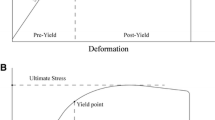Abstract:
Bone fragility can be defined by biomechanical parameters, including ultimate force (a measure of strength), ultimate displacement (reciprocal of brittleness) and work to failure (energy absorption). Bone fragility is influenced by bone size, shape, architecture and tissue ‘quality’. Many osteoporosis treatments build bone mass but also change tissue quality. Antiresorptive therapies, such as bisphosphonates, substantially reduce bone turnover, impairing microdamage repair and causing increased bone mineralization, which can increase the brittleness of bone. Anabolic therapies, such as parathyroid hormone (PTH-(1–84)) or teriparatide (PTH-(1–34)), increase bone turnover and porosity, which offset some of the positive effects on bone strength. Osteoporosis therapies may also affect bone architecture by causing the redistribution of bone structure. Restructuring of bone during treatment may change bone fragility, even in the absence of drug effects on bone mineral density (BMD). This effect may explain why some drugs can affect fracture incidence disproportionately to changes in BMD. For instance, in a recent clinical trial, PTH-(1–34) therapy caused a dose-related increase in spinal BMD without any dose-dependent effect on the observed decrease in spinal fracture incidence. This apparent disassociation between spinal BMD and bone fragility is probably due to effects of PTH-(1–34) on bone architecture within vertebral bodies. While it has been shown that BMD is highly heritable, bone mineral distribution and architecture are also under strong genetic influence. Recent findings suggest that different genes regulate trabecular and cortical structures within lumbar vertebrae, producing a wide range of bone architectural designs. These findings suggest that there is no single optimal bone architecture; instead many different architectural solutions produce adequate bone strength.
Similar content being viewed by others
Author information
Authors and Affiliations
Additional information
Received: 14 June 2001 / Accepted: 3 September 2001
Rights and permissions
About this article
Cite this article
Turner, C. Biomechanics of Bone: Determinants of Skeletal Fragility and Bone Quality . Osteoporos Int 13, 97–104 (2002). https://doi.org/10.1007/s001980200000
Issue Date:
DOI: https://doi.org/10.1007/s001980200000




